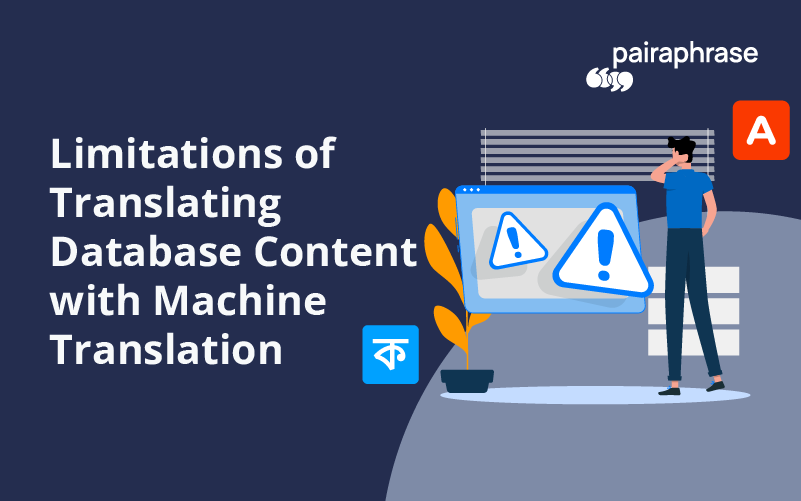Have you run into problems while translating your database content into various languages? Your company isn’t the first to encounter these issues. We’re going to give you an overview of issues commonly seen when running your database file through machine translation and why this is happening.
If you haven’t started this process yet, but you plan to translate database content for your website or catalog, this post can help you know what to expect.
What Creates Database Language Translation Issues?
Single Character Words
If your database contains single characters, these might be mistranslated as single character words. As you know, certain single letters can represent a word. Such as A or I in English, or Y in Spanish (for “and”) and E in Italian (for “and”). This applies to several languages.
So you might end up translating an English character I or A that’s been translated to IO or UN in Italian.
Lack of Context
One of the biggest challenges is that the text may be truncated and there are no visuals to help comprehension. This can lead to a literal translation.
Attributes or Categories
Your database might contain certain multi-letter codes to denote a combination of specific attributes or categories. These can be misinterpreted as full words. If your database has “BUY” as a code and the source language is English, this can be translated into the word for “BUY” in the target language. Suddenly, your 3-letter code is translated to “ACHETER” in French.
Delimiters
In addition to the database translation issues listed above, special delimiters used in text files to separate data will often lead to troubleshooting. If the input contains delimiter-separated values, you need to pay special attention to this potential obstacle.
Any time you run a database file through translation software, there’s the potential for spaces and symbols to be shuffled around or lost. This may pose problems for your database functionality, which is why this is particularly important to pay attention to.
How Translation Memory Can Help
If you’re translating a database and running into any of the above issues, you could work with your translation software’s developer to get better translation results. They could get your Translation Memory to trigger an optimized experience so it can handle the database files in the way you intend it to.
Translate Database Files with Pairaphrase
At Pairaphrase, it’s our mission to make translation faster, smarter and safer. We understand the issues involved with database language translation, and we’re willing to work with you on your input/output issues.


.png)

.png)



